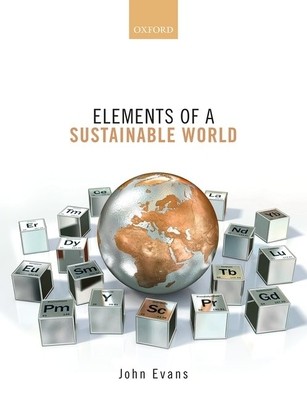
- We will send in 10–14 business days.
- Author: John Evans
- Publisher: Oxford University Press, USA
- ISBN-10: 0198827830
- ISBN-13: 9780198827832
- Format: 18.8 x 24.9 x 2.3 cm, kieti viršeliai
- Language: English
- SAVE -10% with code: EXTRA
Reviews
Description
We have 118 known chemical elements as our palette in our context of sustaining our world. Our context is considered in terms of the four spheres of the ancient world: Earth, Air, Fire and Water. This book shows how chemical principles can be used to understand the pressures on our world, spanning from greenhouse emissions through freshwater supplies to energy generation and storage. The supply of the chemical elements is key to their contribution to alleviating these pressures. Most synthetic and radioactive elements are not available in sufficient supply to contribute in this. Some solutions, such as wind turbines, batteries, fuel cells and automotive exhaust remediation pose questions about sustainable supplies of critical elements. With an eye on the target of the IPCC of capping the temperature anomaly to 1.5 oC (RCP2.6), options for carbon capture and storage, and the generation of energy and element supply from the sea are assessed. The consequences of the escape of
plastics and pharmaceuticals into the wider environment for water integrity are also considered.
EXTRA 10 % discount with code: EXTRA
The promotion ends in 22d.18:42:17
The discount code is valid when purchasing from 10 €. Discounts do not stack.
- Author: John Evans
- Publisher: Oxford University Press, USA
- ISBN-10: 0198827830
- ISBN-13: 9780198827832
- Format: 18.8 x 24.9 x 2.3 cm, kieti viršeliai
- Language: English English
We have 118 known chemical elements as our palette in our context of sustaining our world. Our context is considered in terms of the four spheres of the ancient world: Earth, Air, Fire and Water. This book shows how chemical principles can be used to understand the pressures on our world, spanning from greenhouse emissions through freshwater supplies to energy generation and storage. The supply of the chemical elements is key to their contribution to alleviating these pressures. Most synthetic and radioactive elements are not available in sufficient supply to contribute in this. Some solutions, such as wind turbines, batteries, fuel cells and automotive exhaust remediation pose questions about sustainable supplies of critical elements. With an eye on the target of the IPCC of capping the temperature anomaly to 1.5 oC (RCP2.6), options for carbon capture and storage, and the generation of energy and element supply from the sea are assessed. The consequences of the escape of
plastics and pharmaceuticals into the wider environment for water integrity are also considered.


Reviews